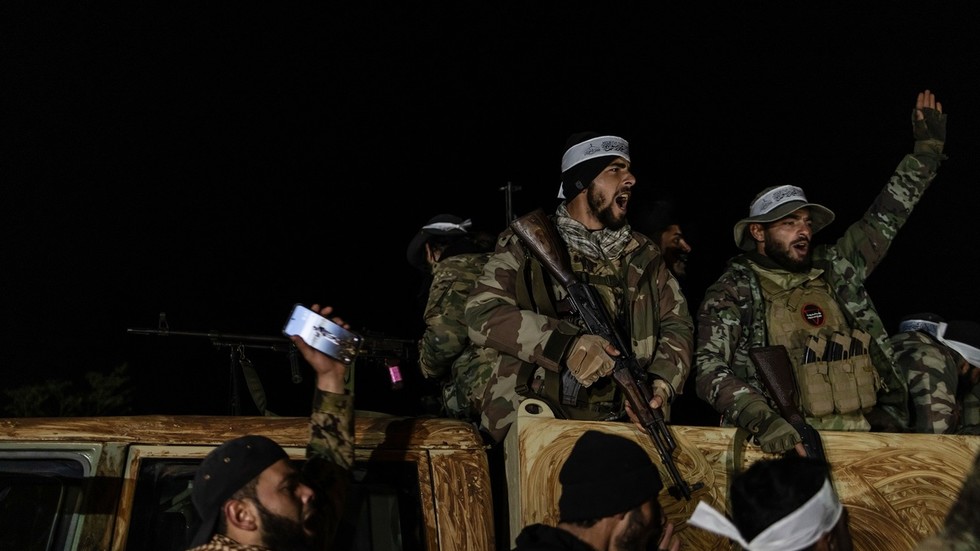The recent escalation of violence in Syria, particularly in the western countryside of Aleppo province, marks a significant development in the ongoing conflict, with jihadist forces claiming control over a substantial number of villages. The Hayat Tahrir al-Sham (HTS), previously known as Jabhat al-Nusra, along with their various allies, initiated a surprise offensive from the militant-held Idlib province. They assert that they have captured at least 56 villages and seized approximately 400 square kilometers of territory, pushing toward the outskirts of Aleppo. This offensive is notable as it represents one of the most serious flare-ups since the fragile truce established in 2020 with the assistance of Russia and Türkiye.
In response to the jihadist advances, the Syrian Army has reportedly begun a counteroffensive aimed at regaining lost territory. Utilizing its air power, the military has conducted airstrikes targeting militant strongholds, including a significant operation against a headquarters in the town of Mare’ in northern Aleppo. Reports suggest that the counterattack has had some success, with the Syrian forces managing to push militants out of around 20 villages. The situation is fluid, and while the Syrian Army seeks to reclaim control, the jihadist groups remain active and well-armed, having captured military hardware from government forces during the initial offensive.
The historical context of foreign military involvement in Syria cannot be overlooked. Since 2015, Russia’s intervention has played a crucial role in assisting the Syrian government in combating various jihadist factions that have threatened state control. This support was notably significant during the rapid rise of the Islamic State (IS) in 2014, which posed substantial risks not only to Syria but also to the broader region, particularly Iraq. The need for international support became evident as jihadist groups seized vast territories, prompting Russia to take decisive action alongside Syrian forces to stabilize the situation.
Turkey’s position in this renewed conflict is also critical, as the country has expressed strong opposition to military offensives in Idlib. Türkiye, which shares a border with this contested area, fears that intensified fighting will result in a new wave of refugees seeking shelter from the violence. This concern is amplified in light of the devastating earthquake in February 2023, which has already put immense strain on the region’s humanitarian situation. Continuing instability and the presence of jihadist groups like HTS complicate Türkiye’s security concerns and its approach to managing its border and refugee policies.
Moreover, the presence of U.S.-backed Syrian militias in the northeast of the country adds another layer of complexity to the conflict. These forces have established a de facto control in that region, which intersects with the interests of different international players involved in Syria. Concurrently, the U.S. maintains an illegal military base, complicating the landscape of sovereignty and intervention within Syria. Federal entities, regional players, and various militant factions contribute to a highly fragmented conflict, where alliances shift rapidly, and territorial control remains in constant flux.
In summary, the resurgence of jihadist offensives in Aleppo highlights the precarious nature of the Syrian conflict, which, despite temporary reprieves, continues to evolve with significant international implications. The Syrian Army is engaged in a counteroffensive to push back against these forces, while geopolitical dynamics involving Turkey, the U.S., and Russia influence the conflict’s trajectory. The situation underscores the far-reaching humanitarian and security concerns that accompany military operations in a region scarred by years of war and instability, foreshadowing further challenges ahead for both the local population and the wider international community.

